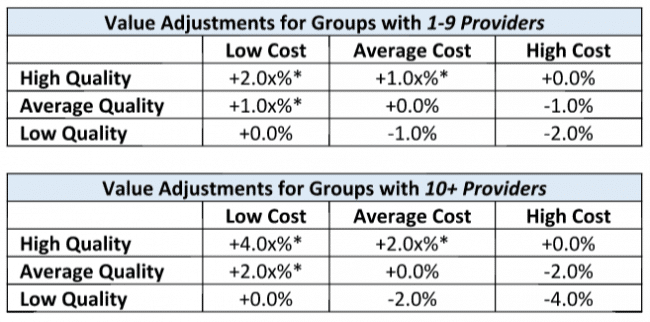If you are worried about calculating your composite score for the Merit-based Incentive Payment System (MIPS), you aren’t alone. The Centers for Medicare and Medicaid (CMS) have not made it clear at all how practices can determine their composite score based on the knowledge of the data they are submitting. While we know how some of the categories will give us points, such as the Advancing Care Information and the Clinical Practice Improvement Activities. Unfortunately, 60% of the composite performance score comes from the Quality and Resource Use categories which are determined by how your practice compares with others around the country. That being said, we aren’t completely in the dark as to how these categories are going to be calculated.
Currently the Value-based Payment Modifier program works similarly to how these two categories are scored. The Value Modifier uses data collected from the Physician Quality Reporting System (PQRS) program and the claims that have been submitted to Medicare for payment. The Value Modifier program uses this information and places providers into 3 buckets: Low, Average, or High. These three buckets are used for both the Quality and Resource Use categories so the providers are graded into a matrix of 9 categories. Providers are categorized as Low Quality – High Cost through High Quality – Low Cost. These categories then determine the reimbursement bonus for the Value Modifier.
The Quality and Resource Use Reports (QRUR) help us determine how practices score in each of the categories. If you haven’t yet received you QRUR, you can log on EDIM to view the report.
Understanding the QRUR
The QRUR has several important elements. The first is the chart that shows where your practice fell in relation to all other practices. The important thing here is that most specialists who don’t provide primary care services will fall in the Average Cost range because CMS has not implemented appropriate measures to track resource use for these specialties. That being said, realistically most practices will probably fall within the average range for cost because the way the measure is determined. A clinician’s score is compared to the average of all scores of clinicians who reported on a measure.

Example: Measure 130 Shows a mean from all clinicians reporting of 83.63% with a huge standard deviation of 25.09
The above shows what a typical measure looks like. What this data tells us that there is a huge divide on how people are reporting data. We know that there are clinicians reporting well for this measure, but that there must also be people performing poorly, in order to get such a large standard deviation. This tells us that the mean and standard deviation may be a poor type of measures for determining scores for the Value Modifier. CMS seems to agree, because with MIPS they are changing how the scoring for each of these categories works.
What does this mean for my payments in 2017 and beyond?
Because CMS chose the mean as the measure for determining the Value Modifier payment scores, there is a very tight cluster of practices that will receive a 0% modifier. This means they will see neither a payment increase, nor a payment decrease in 2017. If you look at the image below, you can see how practices and clinicians were distributed. As we will see with MIPS the paradigm changes. The new program will use decile ranks as opposed to the mean to determine scores. It will rely how data is clustered as opposed to looking at a population mean. This should help those who are performing well, receive more points. The 2015 QRUR will be helpful in determining what a practice should do for the first year of MIPS.

Distribution of practice scores for the value modifier in 2015

